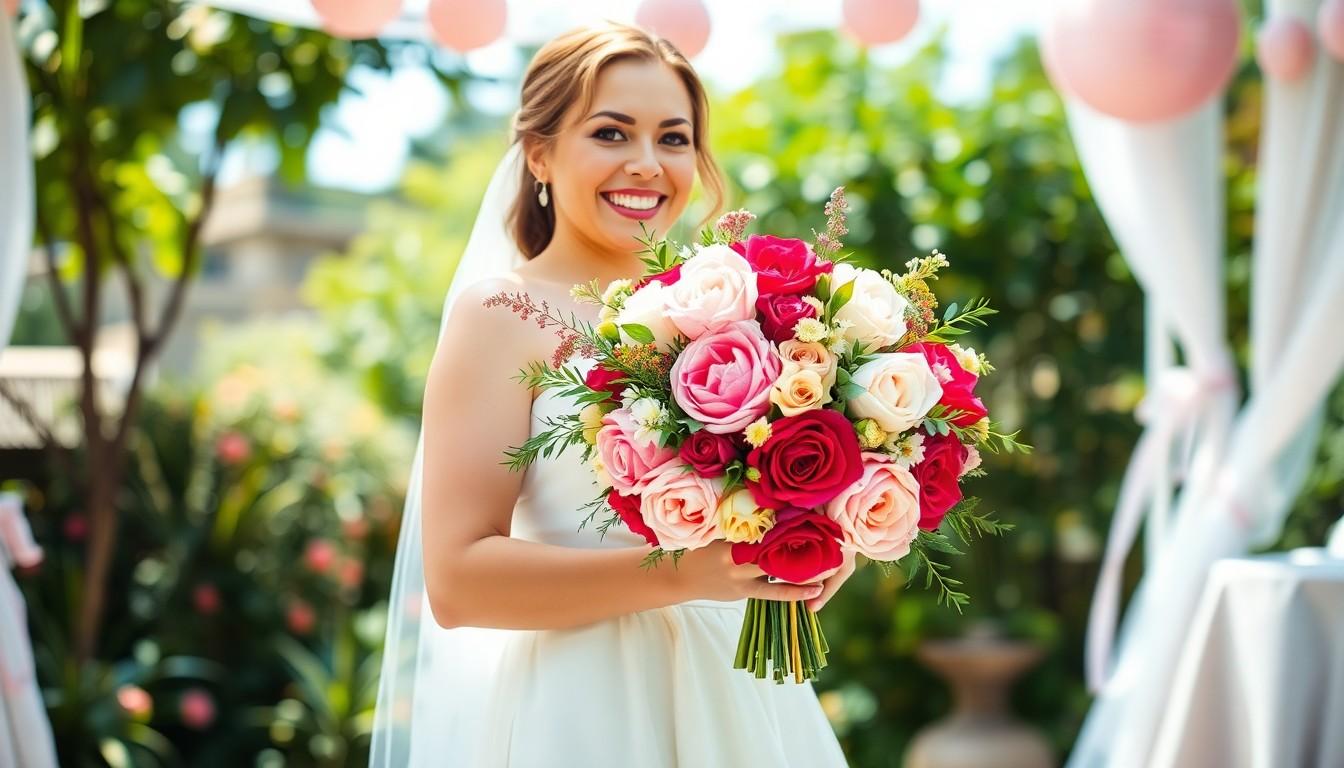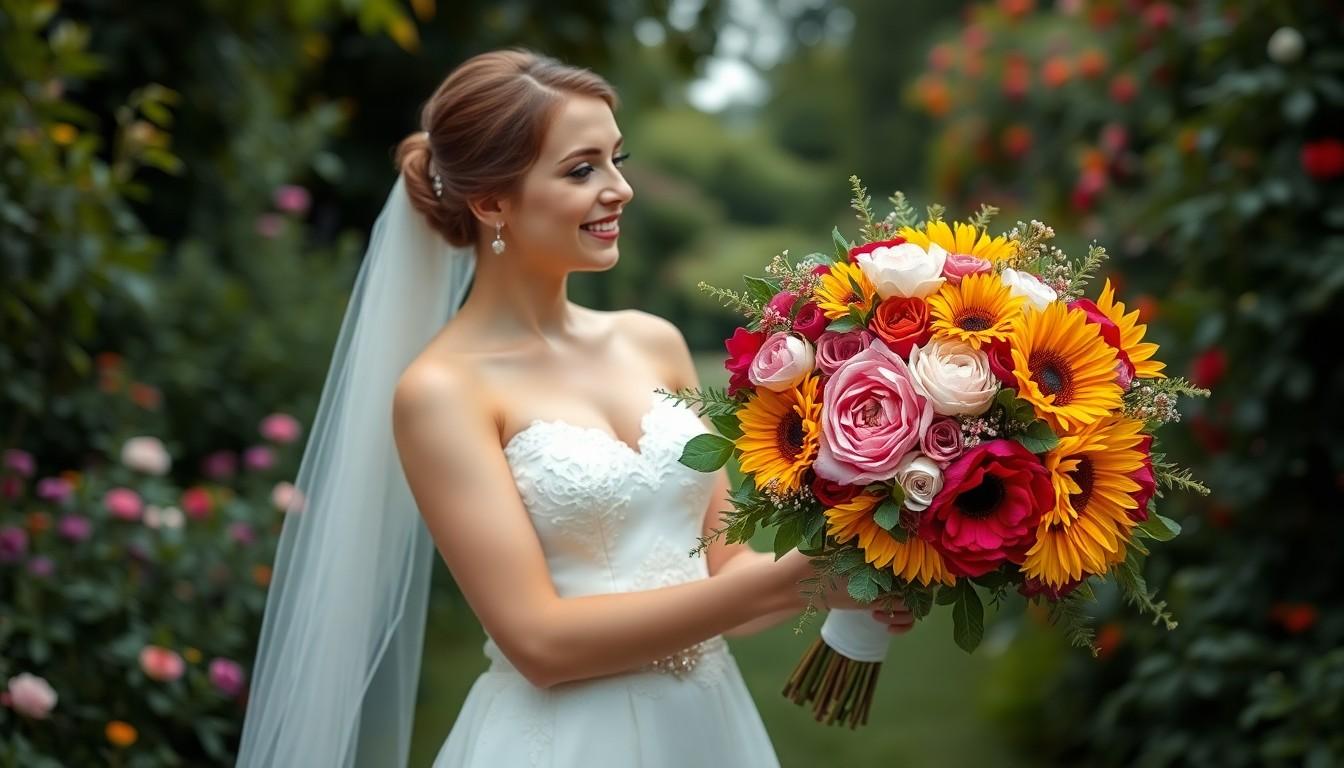Physical Address
304 North Cardinal St.
Dorchester Center, MA 02124

Every wedding has its traditions, but few are as iconic as the bride carrying flowers. While some might think it’s just a pretty accessory, there’s a bouquet of reasons behind this floral custom. From symbolizing love and fertility to warding off evil spirits, these blooms pack a punch beyond their beauty.
Imagine walking down the aisle without a bouquet—talk about a floral faux pas! It’s like a superhero without a cape or a cake without frosting. Carrying flowers not only enhances the bride’s stunning look but also adds a touch of romance to the ceremony. So, why do brides carry flowers? Let’s dive into the colorful history and delightful meanings behind this cherished tradition.
Brides carrying flowers holds deep historical roots, intertwining various customs and beliefs. This tradition reflects cultural practices that span centuries.
In ancient Greece, brides adorned themselves with crowns made of herbs and flowers. These floral arrangements aimed to symbolize fertility and prosperity in marriage. Similarly, the Romans carried bouquets of wheat and herbs to ensure a bountiful life together. Customarily, different cultures integrated flowers into wedding rituals to connect with nature and celebrate love.
Flowers signify multiple meanings, extending beyond aesthetics. Roses represent love and passion, while lilies denote purity and commitment. Specific flowers, like orange blossoms, evoke happiness and fertility. Each chosen bloom carries a distinct message, contributing to the overall sentiment of the marriage ceremony. Thus, the bouquet reflects not only beauty but also the hopes and dreams of the couple’s future.

Brides today continue the cherished tradition of carrying flowers, incorporating contemporary styles and meanings into their choices. Floral arrangements now reflect personal tastes and seasonal availability, offering unique statements on special days.
Roses frequently grace bridal bouquets, symbolizing love and beauty. Peonies add a soft touch, representing romance and prosperity. Lilies denote purity, often selected for their elegance. Sunflowers bring warmth and joy, reflecting cheerful personality traits. Daisies evoke innocence, commonly chosen for a playful charm. These varieties together encapsulate sentiments suited to the couple’s relationship.
Recent trends showcase a shift toward wildflower arrangements, emphasizing natural beauty and earthy aesthetics. Monochromatic palettes gain traction, capturing elegance in simplicity. Unique textures emerge through the use of dried flowers, offering a vintage touch. Additionally, personalized elements, such as family heirlooms or sentimental charms, appear more frequently, infusing individual stories into bouquets. These trends highlight the bride’s character, making every bouquet as distinct as the bride herself.
Brides around the world carry flowers, but customs and meanings differ across cultures. Each region brings its own unique interpretations to this tradition.
In Europe, flowers often symbolize love. Mediterranean countries typically favor vibrant blooms, showcasing a celebration of romance. Asian cultures might incorporate specific flowers, like lotus, representing purity and spiritual renewal. In India, brides use marigolds in elaborate garlands to signify auspiciousness and joy. Each area’s floral preferences reflect local customs and beliefs, enriching the wedding experience.
Certain regions feature distinct customs that highlight the importance of flowers. In Mexico, brides may carry a “bouquet of the dead,” incorporating flowers like cempasúchil to honor deceased relatives. Japanese brides often include flowers in their hair, connecting to ancestral traditions. In parts of South Africa, proteas symbolize strength and resilience, presenting a vibrant yet meaningful choice. These unique customs showcase how flowers serve as powerful cultural symbols during weddings.
Flowers carry significant emotional weight for brides on their wedding day. They embody love, celebration, and new beginnings, enhancing the special atmosphere of the ceremony.
Brides view their bouquets as a vital accessory, linking them to the ritual. Flowers enhance the overall aesthetic, creating a cohesive theme throughout the event. The fragrance from blooms invites deeper emotional engagement, often triggering fond memories and joyful feelings. Seasonally appropriate flowers create connections to nature and personal history. Vibrant colors or specific types resonate with the couple’s story, making the bouquets a focal point during the celebration.
Personalization plays a crucial role in the bouquet’s significance. Brides often select flowers that reflect their personalities or familial traditions. For instance, using late grandmother’s favorite flowers honors cherished memories, enriching the day with emotional depth. Custom flower choices may represent unique milestones in the couple’s journey. Each bloom transforms into a symbol of love, commitment, and hope for the future. Embracing this floral tradition enables brides to express their individual stories, making the wedding genuinely theirs.
Brides carrying flowers is a time-honored tradition rich in meaning and cultural significance. These floral arrangements not only enhance the bride’s beauty but also symbolize love, fertility, and new beginnings. Each bloom tells a story and reflects the couple’s journey and aspirations.
As this custom evolves, modern brides are embracing personalization and unique styles, making their bouquets a true reflection of their personalities. The emotional resonance of flowers during weddings continues to create memorable experiences, linking generations through shared traditions and sentiments. Ultimately, the act of carrying flowers remains a powerful expression of love and commitment in the wedding ceremony.